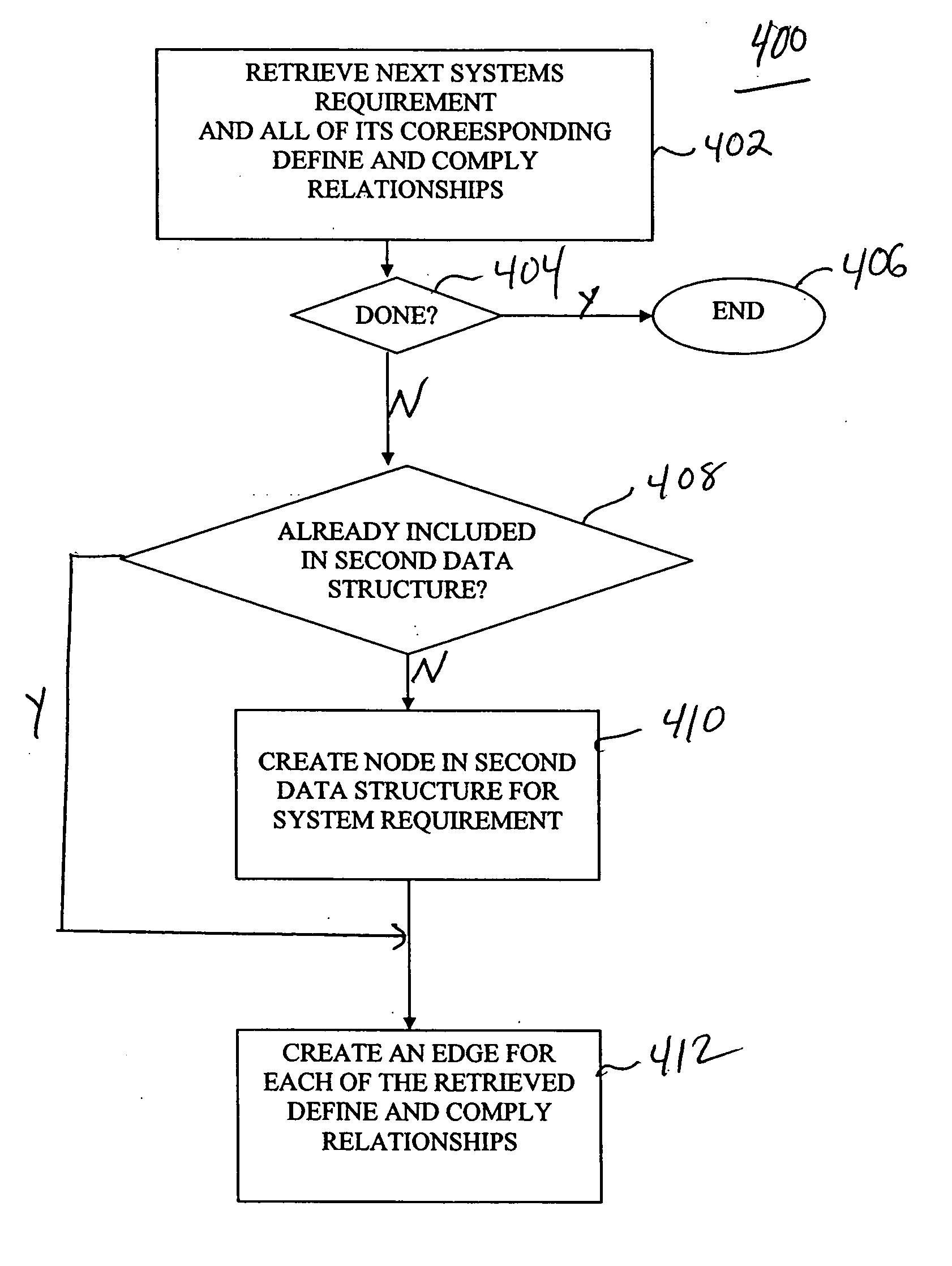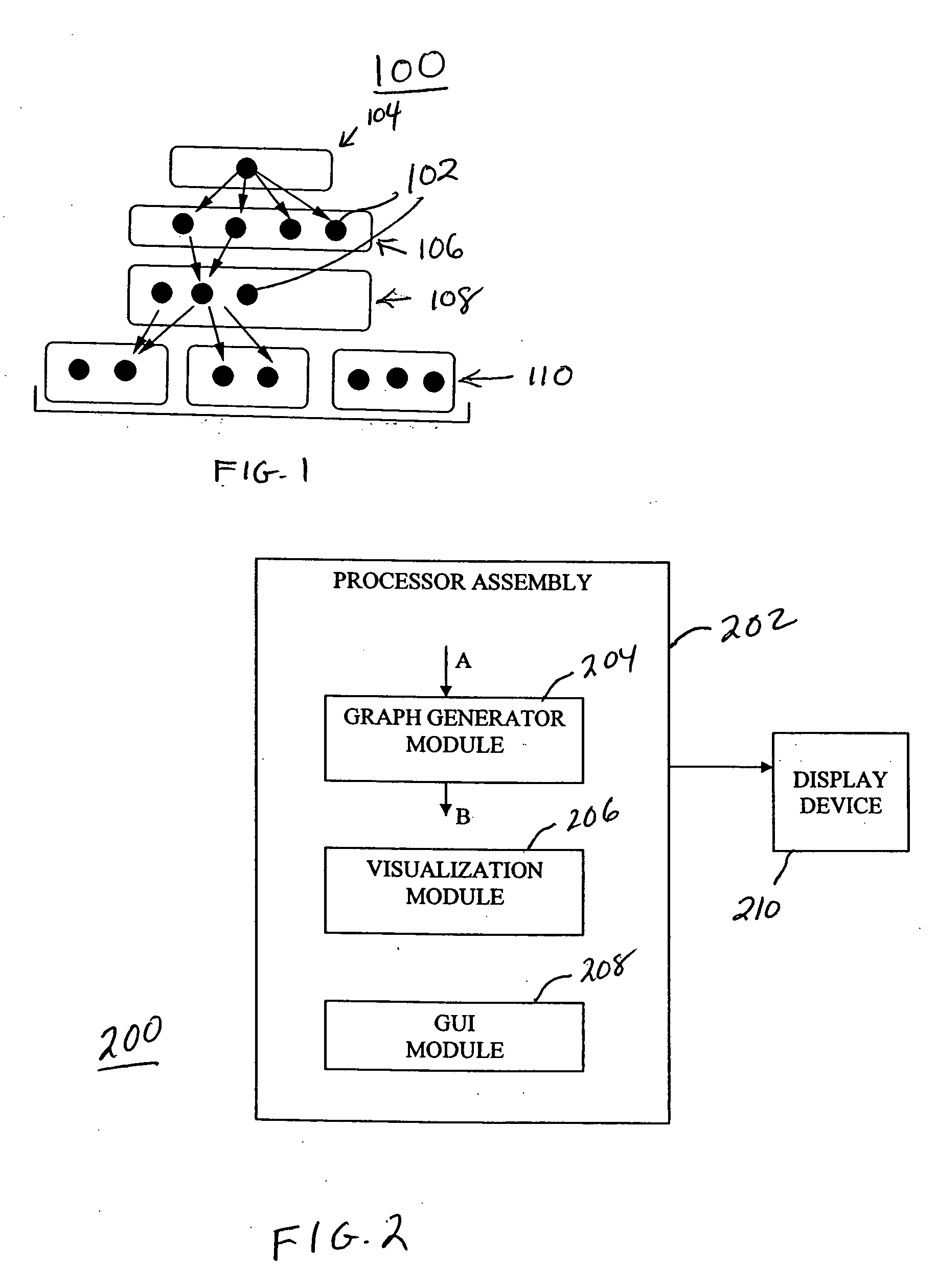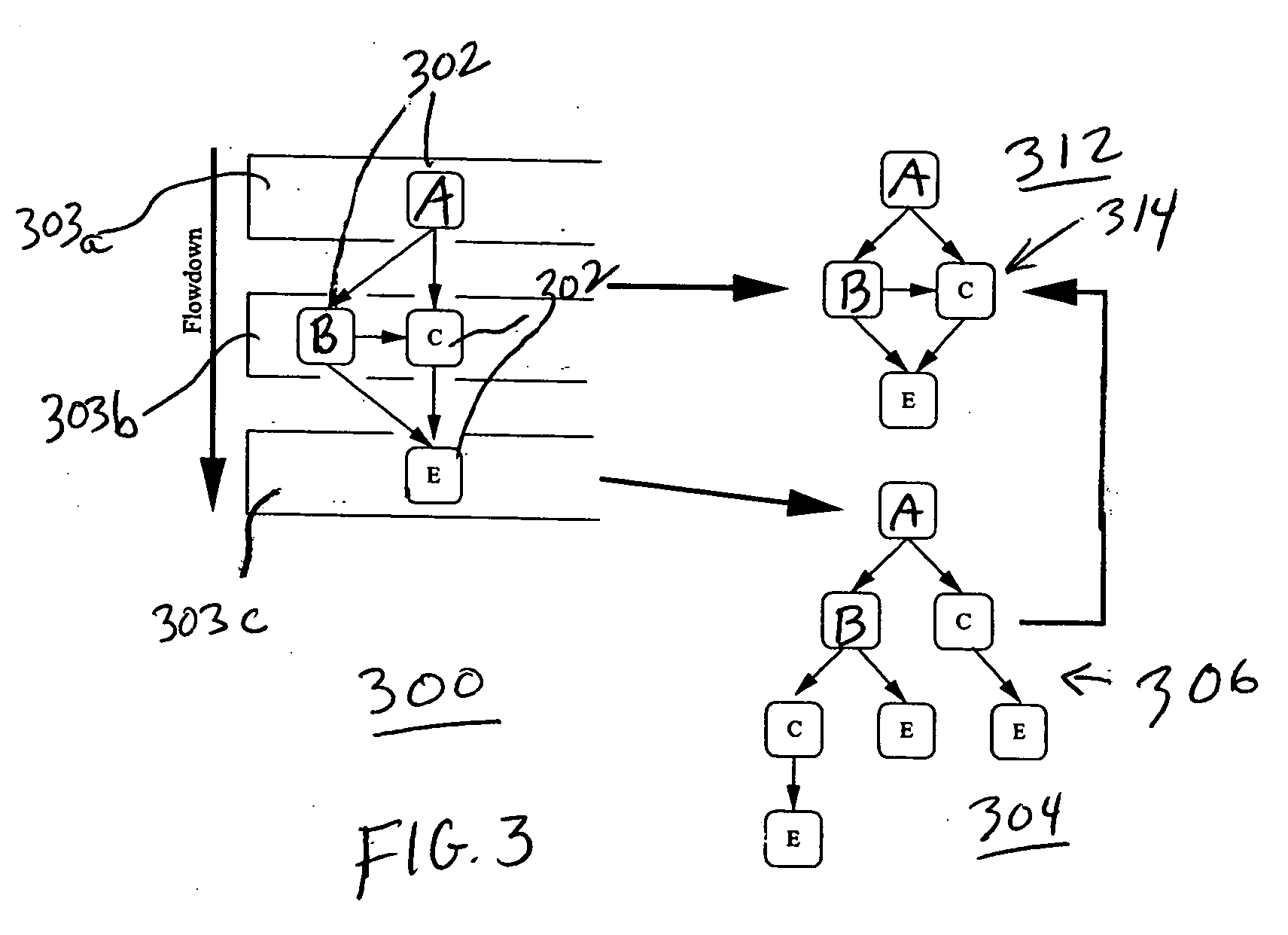Tree-to-graph folding procedure for systems engineering requirements
a system engineering and requirements technology, applied in the field of tree-to-graph folding procedure for systems engineering requirements, can solve the problems of unfavorable and reliable automatic identification of duplicate nodes, inability to comprehensively manually identify duplicate nodes and all complying and defining relationships associated with each node, and limited search mechanisms to the use of keywords
- Summary
- Abstract
- Description
- Claims
- Application Information
AI Technical Summary
Problems solved by technology
Method used
Image
Examples
Embodiment Construction
[0021] Reference should be made to the drawings where like reference numerals refer to similar elements throughout the various figures. FIG. 1 shows a representation 100 of a set of layered systems engineering requirements 102 for an exemplary engineering project, where the systems engineering requirements are also referred to throughout the present disclosure as systems requirements or requirements. Each exemplary layer corresponds to a respective layer of responsibility. The top layer 104 corresponds to a mission objective, layer 106 corresponds to science requirements, layer 108 corresponds to system-level systems engineering requirements and layer 110 corresponds to sub-system systems requirements. At level 110, the systems requirements may be organized into clusters suitable for team development. Further levels may be provided below level 110, such as directed at specific sub-systems of the sub-systems in layer 110, such as an instrument or a circuit. Software management tools,...
PUM
 Login to View More
Login to View More Abstract
Description
Claims
Application Information
 Login to View More
Login to View More - R&D
- Intellectual Property
- Life Sciences
- Materials
- Tech Scout
- Unparalleled Data Quality
- Higher Quality Content
- 60% Fewer Hallucinations
Browse by: Latest US Patents, China's latest patents, Technical Efficacy Thesaurus, Application Domain, Technology Topic, Popular Technical Reports.
© 2025 PatSnap. All rights reserved.Legal|Privacy policy|Modern Slavery Act Transparency Statement|Sitemap|About US| Contact US: help@patsnap.com



